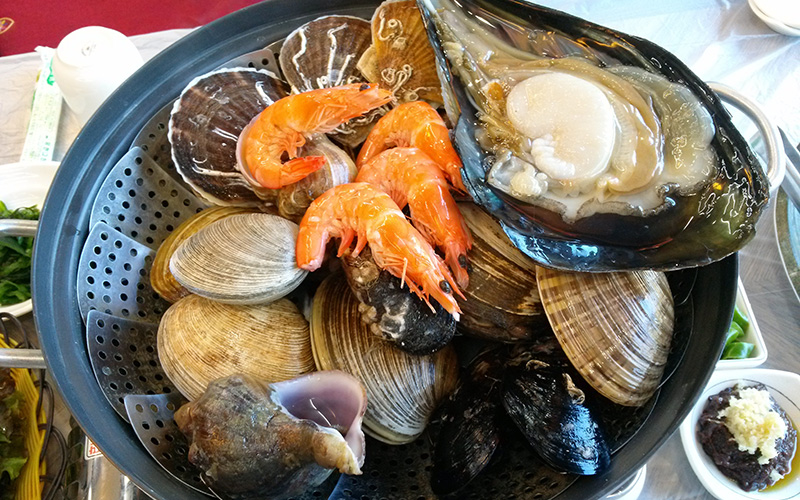
If you happen to have nutritional apps or software that allows you to analyze your diet or the specific foods that you eat, you can determine the exact amount of protein, fat and carbohydrate present in any food. Protein, fat and carbohydrate are called macronutrients and are found in both plant and animal foods.
Plant foods almost always have all three macronutrients and typically contain primarily carbohydrate (~ 60 to 80% by calories), some protein (15-25% by calories) and generally little fat. There are some notable exceptions here regarding fat in plant foods – like avocados, olives and nuts which contain lots of fat (mainly monounsaturated) and little carbohydrate. I know of almost no naturally occurring plant food which is both high in carbohydrate and high in fat.
This combination of macronutrients (high in both fat and carbohydrate) occurs routinely in almost all processed and human-made foods like cookies, potato chips, pastries, ice cream, French fries, pizza, doughnuts, crackers, tortilla chips, breads, chocolates, salad dressings, tacos, hamburgers, enchiladas, candy, sandwiches and many more. These are the ubiquitous foods of “civilization” and represent the “comfort” or “fast” foods of the 20th and 21st century that are largely responsible for the obesity epidemic sweeping the US and the western world along with its associated health problems (hypertension, cardiovascular disease, type 2 diabetes, acne, gout, cancers and others).
Numerous nutritional scientists and authorities worldwide now recognize that by reducing the carbohydrate content of our diet we can lose weight and reduce our risk for the chronic diseases that plague western civilization – particularly if we reduce high glycemic load carbohydrates (refined sugars, refined grains, potatoes and most processed foods). This formula (lowering the dietary carbohydrate content of the diet) has been the strategy behind the Atkins Diet and other low carb programs for weight loss. Nevertheless, improving health and well being is not just about lowering carbs, but rather about multiple nutritional parameters which ultimately help us to maintain normal body weights and reduce our risk for disease. This approach is what the Paleo Diet is all about. Atkins and other low carb diets, popular diets failed to consider what we now know as an important element of healthful diets — acid/base balance. Cheese (a high fat, practically zero carb food) which can be a mainstay of almost all, low carb contemporary diets is extremely net acid producing in our bodies and promotes bone loss, hypertension, kidney stones and contributes to stroke risk. The Paleo Diet circumvents these nutritional shortcomings by allowing you unlimited carbohydrate consumption in the form of fresh veggies and fruits which are net base or alkaline yielding in our bodies and actually reduce the risk for osteoporosis, high blood pressure, kidney stones and stroke.
Over the past two decades as I researched commonly available modern foods that should be included in contemporary Paleo Diets, I was somewhat startled to discover that not all animal foods (meat, poultry, pork, lamb, beef, eggs, fish, shellfish, organ meat, etc.) were completely composed of only protein and fat. From my undergraduate and graduate nutritional courses, I had learned the traditional dogma that meat and fish contained no carbs and were simply a mixture of protein and fat.
Coming from my academic background in exercise physiology, I knew that all muscle tissue contained carbohydrate in the form of glycogen, a polymer of glucose, and that human muscle glycogen content could easily be increased by augmented consumption of carbohydrates. Which endurance athlete among us has not heard of “carbohydrate loading” to improve performance? So the question I posed to myself was, “If human muscle contains glycogen, then why doesn’t beef muscle meat, or any other animal meat which we buy at the supermarket, contain a small or residual amount of carbohydrate in the form of glycogen?”

Virtually all of the nutritional databases showed fresh meat to contain nearly no dietary carbohydrate. As I researched this anomaly further, it became apparent that supermarket meats contained almost no carbohydrate for a basic physiologic reason – rigor mortis – a condition in which the muscles go into rigid contraction for the few minutes and hours after death. The fuel that supplies rigor mortis is stored muscle glycogen, and once this fuel is expended, rigor mortis resides and muscle meats contain virtually zero glycogen and hence zero carbohydrate.
An interesting sidelight of this observation is that only a very few animal foods contain carbohydrate after death. Liver in mammals escapes rigor mortis and typically contains about 5% carbohydrate. Fish flesh contains virtually no carbohydrate. Not so for shellfish. The table below shows the carbohydrate content of various shellfish long after their death. Note that a number of shellfish contain a significant percentage of calories (10 – 25%) as carbohydrate including oysters, mussels, abalone, whelk, clams, octopus and scallops.
Does this information mean that you should restrict shellfish consumption on a contemporary Paleo Diet? Absolutely not! Overall, their carbohydrate content is minimal and occurs with a high protein and omega 3 fatty acid intake – both factors which improve your carbohydrate metabolism. Shellfish are one of the most healthful, high protein foods you can consume to improve your glucose and insulin metabolism and reduce your risk for chronic disease. Additionally shellfish are nutrient dense foods rich in zinc, B vitamins and omega 3 fatty acids which improve immune function and resistance to the diseases of western civilization.
Source: Article by Loren Cordain (https://thepaleodiet.com/believe-shellfish-contains-carbohydrate/)
